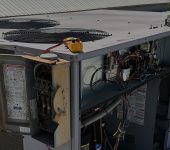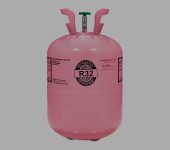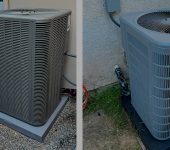Heating Services in Orange County, CA
Mid-winter can be a misery due to freezing temperatures and a malfunctioning heating system. If you don’t get an HVAC furnace tune-up before winter, you might face frozen pipes, long wait times, and extra costs.
Just like our bodies, these systems can benefit from a regular heating system tune-up. This helps find problems early before they become costly and harmful.
In order to keep your home heating system operating safely and effectively, heating tune-ups involve inspections or repairs. They are comparable to auto repair. Your heating system’s lifespan can be more than doubled with routine maintenance. That being said, what does a furnace tune up include?
What Is a Furnace Tune-Up?
A furnace tune-up is a preventive measure. It helps your furnace run smoothly and efficiently. It also lowers the chance of problems. Nobody wants to find out their furnace is broken in the middle of the night when they wake up shivering. So, what is a furnace tune up?
Professional HVAC system checkups therefore identify minor issues before they necessitate more extensive repairs. By paying for HVAC checks in advance, you can avoid higher energy costs. This also helps you save money on repairs and replacements.
Why Regular Heating Tune-Ups Are Essential
Preventing significant malfunctions requires routine heating maintenance. Our experts carefully check your heating system. They find and fix small problems before they turn into expensive repairs.
Regular tune-ups help prevent system failure. They identify problems early, like worn-out parts or small leaks. Regularly maintaining your heating system reduces the risk of unexpected breakdowns. This helps ensure you always have heat.
Our experts look for any safety risks, such gas leaks or damaged wiring, during a tune-up. Making sure every part is in good operating order helps avoid problems like electrical fires and carbon monoxide leaks.
What Does a Furnace Tune-Up Include?
A qualified professional will inspect your furnace carefully. They will check for signs of wear, damage, or any problems. This entails checking the thermostat, electrical connections, ignition system, burner, and heat exchanger. To get rid of dust and debris that could impair performance, the technician will clean the blower motor, fan blades, and other parts. To guarantee smooth operation and lessen friction, they will lubricate moving parts.
To make sure your furnace is functioning in accordance with the manufacturer’s requirements, its performance will be examined. To maximize efficiency, this involves monitoring the gas pressure, combustion, and airflow. The technician will adjust the thermostat’s settings if needed to guarantee precise temperature control and effective performance.
The technician will offer suggestions for fixes or replacements if any faults or possible difficulties are found. By taking immediate action, these problems can be avoided before they become more serious..
Key Steps in a Furnace Check-Up
What is included in a furnace tune up? To keep your system running well and to improve performance, you should do the following furnace check-up. A professional’s furnace servicing checklist should include the following steps:
- Examining the connections between the vent and flue
- Changing or cleaning the air filter
- Dusting the furnace’s outside coils, vents, and interior
- Examining the motors, blowers, and fan belts
- Changing the burners and pilot light Examining electrical parts
- Checking for air leaks in ducting
- Checking for obstructions in the furnace condensate drain
Every one of these activities necessitates a thorough understanding of how your specific system functions. To prevent corrosion from soot buildup, you should clean and tune up your furnace at least once a year. This does not include changing the filter.
Furnace Inspection and Cleaning
Because furnaces are typically located in utility closets and basements, dust is frequent on their surfaces. To keep the area clean, vacuum around the furnace. Wipe down the furnace’s surface regularly.
After an inspection, a skilled technician will clean your furnace. They will leave it in great condition if you hire them. Component cleaning and inspection is one of the primary duties of a furnace inspection and cleaning. Parts like the heat exchanger, filters, and burners are carefully inspected by our professionals. By cleaning these parts, junk that could lead to the system overheating or malfunctioning is eliminated.
Frequent cleaning and inspection guarantee that every part functions as intended, giving your house dependable warmth. The procedure consists of:
- Inspecting and Clean Blowers
The furnace specialist will next remove and clean the blower motor. This part controls the airflow for heating and cooling. The furnace’s fan, which helps move air out of the system, is powered by the blower. Additionally, the blower’s run capacitor, which serves as a battery for the blower, should be examined for performance issues.
- Checking Flue Pipe
Fuel byproducts must be removed from your house via the flue pipe. A professional will inspect your flue pipe to ensure proper fit and flow. Additionally, they will inspect the pipe for soot buildup, water stains, loose joints, and corrosion. Exhaust gases can build up in your home if the flue pipe is not working right. This can lead to dangerous carbon monoxide exposure.
- Check Heat Exchanger
The heat exchanger is the next component to be inspected in your furnace. The task of combining hot and cold air falls to heat exchangers. In order to ensure that the temperature achieves equilibrium, this initiates the furnace’s heat transfer. Heat exchangers just need to be visually inspected. Soot, cracks, sounds, and a formaldehyde-like odor are some indicators that an exchanger is having problems.
Gas Furnace Tune-Up: Safety & Efficiency Checks
Don’t wait for the weather to cool down. Check your furnace now to make sure it is working properly. A yearly check by a certified furnace expert and regular heating tune-ups can help you avoid problems. This way, you won’t be left cold on a chilly day.
To keep your feet warm and your furnace running, follow this comprehensive gas furnace tune up
checklist.
- Change the Filters
This is the schedule for changing furnace filters:
- Every ninety days, no pets
- Every 60 days if you have pets
- Every 30 to 45 days if someone in your household has allergies
Dirt, debris, and particles can build up and block airflow if you don’t change your filters often. This can lower efficiency.
- Clean the Burners
You should periodically remove and clean your burners. Burners are prone to condensation and soot, which can cause your furnace to age too quickly. You should check them yourself as often as you change the filters. A professional will also do this during an annual furnace tune-up.
Once the furnace has been turned off and the gas valve has been closed, take out the burners and vacuum or wipe them off with a towel. At the same time, the flame sensor that determines if the pilot light is on should be cleaned. Remove it and use a cloth to wipe away any dirt.
- Check the Gas Line
Look for indications of leakage, such as a hissing noise or a distinct propane odor emanating from the shut-off valve. Turn off your main valve and contact a professional immediately if you smell propane or hear a hiss.
- Test the Smoke Detector and Carbon Monoxide Detector
It’s a good idea to test and replace the batteries in your carbon monoxide and smoke detectors. This should be done during your furnace check. Even though these detectors are not part of your gas furnace, keeping them in good working order is important.
Additionally, you ought to verify your carbon monoxide detector.
To prevent false alarms from carbon monoxide (CO) when the furnace starts, keep your detectors away from it.
Make sure your detectors are at least 15 feet from the furnace.
HVAC Furnace Tune-Up: Full System Check
All of the procedures mentioned will be included in the comprehensive exam. A few more complex ones will be handled by a furnace specialist. What to anticipate from your yearly inspection is as follows:
- Clean and Oil the Motors and Bearings
To prolong the life of internal furnace components and avoid failure, a furnace specialist will clean and lubricate them. Many furnaces have two motors, two blower shafts, and four bearings. For both to function properly, they must be lubricated at least once a year.
- Check Thermostat
The accuracy and operation of the thermostat should be examined. Big temperature changes, many on/off cycles, or your furnace not heating are all signs that your thermostat is not working.
The furnace specialist will verify that the thermostat is still functioning correctly and that there is no dust or dirt on it. To assist cut down on energy expenses, you can also ask them to recalibrate your thermometer.
- Inspect Ignition and Flame
To examine ignition and flame performance, your HVAC specialist will turn the furnace on and off. Since it produces the spark required to heat the air, the ignition is an essential component of the furnace.
To see how much oxygen the furnace gets, they will first check the ignition. Then, they will look at the color of the flame. If required, they might modify the pilot valve or replace your ignitor.
- Flush Drains and Traps
During the inspection, the HVAC specialist will also check for water leaks and flush the furnace’s traps and drains. Water leaks indicate problems such as:
- Insecure connections
- Holes and cracks in the condensate drain line
- The trap of most furnaces is connected to at least two internal drains
- These drains aid in cleaning the exhaust and heat exchanger.
Draining condensate is crucial to avoid buildup that can halt combustion. A clogged drain line can also be detected by flushing the drain and traps.
- Check Venting
Because the furnace vents drive gas away from your home through the flue pipe, it’s crucial to make sure the vents are clear. By checking for dirt, leaks, and slopes, the furnace inspector will confirm that there is adequate, unhindered ventilation. Water streaks and corrosion on the vent or flue of your furnace are typical indicators of obstructed venting.
- Adjust and Tighten Panels
Jostled panels can lower efficiency and cause rattling noises. They might even lead to a system shutdown. Your furnace specialist will ensure that all unit panels are securely fastened. An improperly closing front panel may also expose your house to harmful levels of carbon monoxide (CO).
Benefits of Annual Furnace Tune-Ups
The best way to make your heating system last longer is to keep it well-maintained. This ensures it works efficiently each year. Your HVAC system may work less efficiently and break down more often if you skip a yearly heating tune-up. This is especially true during the coldest weather when usage is highest.
The annual heater tune up provides a number of important advantages, such as:
- Enhanced Productivity: By keeping your furnace operating efficiently, you can reduce your energy costs.
- Longer Lifespan: Regular maintenance will help your heating system last longer.
- Avoid Breakdowns: Lower the possibility of unforeseen malfunctions, particularly during periods of high demand.
- Improved Performance: For reliable comfort, make sure your furnace runs at peak efficiency.
- Reduced Repair Expenses: Recognize and fix small problems before they become expensive fixes.
Is it time for system maintenance? Schedule an appointment for a heating tune up service with Go-Tech right now to be sure your system is operating at peak efficiency.
Choosing a Heating Tune-Up Service
One of the most important aspects of routine heating system maintenance is an annual furnace tune-up. It provides a number of advantages, including increased longevity, decreased breakdown risk, and enhanced energy efficiency.
You can keep your furnace running well and your home warm this winter. Plan regular tune-ups and do simple maintenance tasks yourself.
Our experts at Go-Tech know what a furnace tune-up includes. We have the resources to ensure your heating system works at its best. Our skilled specialists’ tune-ups will give you comfort and a dependable heating system throughout the winter.



